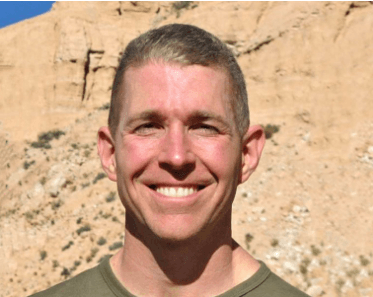Sep 22 2016
A record of shifts in the environment and animal diversity and distribution may help scientists predict effects of current climate change
 Credit: Case Western Reserve University
Credit: Case Western Reserve University
Darin Croft, associate professor of anatomy at the Case Western Reserve University School of Medicine, will try to start filling a gap in the fossil record of South America when he travels to Argentina for research and to teach as a Fulbright scholar this fall.
Croft, a paleomammalogist, hopes to uncover fossils that were deposited following the Middle Miocene Climactic Optimum (MMCO), a warm, humid interval that ended about 15 million years ago and was followed by drier, cooler conditions.
Petrified remains of animals, plants and the soil itself could eventually help complete the picture of environmental variations in South American that were caused by this worldwide climate phenomenon. That, in turn, may help scientists understand and predict the effects of current climate change, Croft said.
“I’m working on two strategies to help improve the record,” Croft said. “One is to collect a series of time slices from Bolivia and northern Chile (where he regularly collects) from before, during and after the MMCO. My work in Patagonia will help complete a similar MMCO-associated series of time slices from that area.”
His second strategy is to develop a continent-long time slice from Colombia to Patagonia from the interval immediately following the MMCO.
“If we find good fossils, that will help us complete both strategies,” he said.
Funded by a Core Fulbright U.S. Scholar Award, Croft will spend three months in Argentina.
He’ll begin his research in a museum, the Museo de La Plata at National University of La Plata, in Buenos Aires Province, which is considered the center of mammal paleontology in South America.
There, he’ll study largely neglected fossil specimens that were collected from Patagonian sites discovered more than a century ago.
While at the university, Croft plans to help teach a course on modern mammal diversity and evolution to graduate and advanced undergraduate students. He’ll also present seminars for faculty and students on his field investigations in other South American countries.
During the last weeks of his Fulbright, Croft plans to scout the Patagonian sites where the fossils were collected. They’ve been rarely revisited.
If he finds and collects substantial fossils from these middle Miocene sites, which are thought to be about 12-14 million years old, he plans to apply for a National Science Foundation grant to collect more.
“Ideally, we would like to have a series of time slices from throughout the continent that span the past 65 million years,” Croft said. “That would allow us to examine both changes through time in one area, as well as differences among faunas across the continent during one interval. We are far from that right now.”
If he’s able to collect enough fossils, he and colleagues may be able to determine how environments changed in South America as climate shifted.
To understand changes globally, better fossil records in Africa, Australia and Asia are needed, too.
“A worldwide synthesis of faunas and environments associated with the MMCO is the ultimate goal,” Croft said, “but it’s a long way off.”